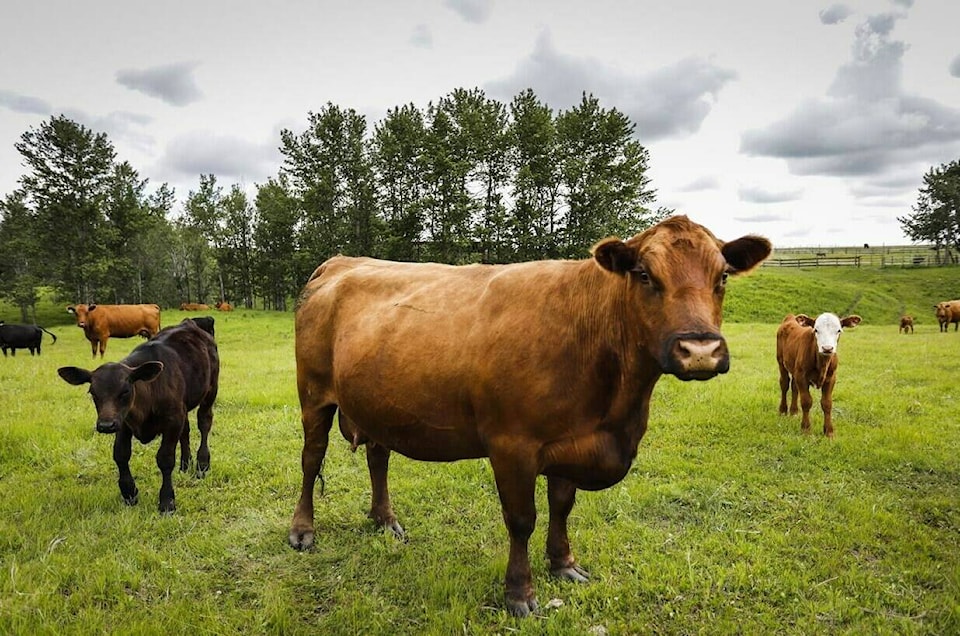The consequences of last summer’s searing drought are being felt on farms and ranches across the Prairies, where some livestock producers are heading into a long, cold winter with dangerously low supplies of feed and water.
On his ranch near Nanton, in southern Alberta, Canadian Cattlemen’s Association president Bob Lowe said he’s fortunate for the late-season rainfall that allowed him to salvage some sort of hay crop. But he said many producers haven’t been so lucky.
“Some people haven’t got anything,” Lowe said. “And water is a huge concern. In some areas, there is no surface water… I haven’t heard of anybody’s wells going dry yet, but that will be the next thing.”
The summer of 2021 will go down on record as one of the worst and most widespread droughts in North America in years. Months of extreme heat and little rain left crops withering in fields across the Prairie provinces and into Western Ontario. In B.C., farmers were also affected by wildfires and heavy smoke.
Now that harvest season is complete, the damage is being tallied. According to a report from the government of Saskatchewan, crop yields in that province were “well below average” and moisture conditions remain a concern, with significant precipitation needed this fall and winter to replenish soil moisture levels and watering holes.
“Many areas in the province will have inadequate winter feed supplies,” the report said. “Due to the dry conditions this year, dugout, slough and well levels have been low and there are concerns about livestock water supplies.”
The government of Manitoba warned in a recent report that pastures in that province have suffered from dry conditions for “much of the last two or three years” and that most pastures are rated “fair to very poor” heading into winter.
The feed shortfall has resulted in spiking prices, so that ranchers looking to purchase supplemental feed for their herds are facing costs two to three times higher than normal.
Lowe said the financial and mental stress means some producers are already starting to sell off herds they’ve spent years building up.
“I’m hearing stories from auction markets about herds of cattle coming up for sale that just haven’t been up for sale before,” he said. “There’s a lot of people getting out of the business. They’re just tired of it.”
In an effort to address the situation, national farm organization the Canadian Federation of Agriculture (CFA) launched an initiative earlier this year called Hay West. The program aims to ship surplus hay from Eastern Canada, where growing conditions were good this year, to the Prairie provinces.
Since August, the program has shipped 5.5 million pounds of livestock feed from the Maritimes, Ontario and Quebec to struggling Western ranchers and farmers. An additional 50 million pounds has been collected and is ready to be shipped via rail or truck.
However, CFA vice-president Keith Currie said the organization needs more funding in order to move that feed. So far, the cost of the Hay West program is largely being covered by private donations (Canadian National Railway Co. recently committed up to $250,000 to help cover freight costs) but CFA is asking the federal government to pitch in too.
“We’re hoping that they step up,” Currie said. “The more we can get, the better. We’re going to start (with an ask) in the millions.”
In August, the federal government pledged up to $500 million for drought-affected farmers through AgriRecovery, a federal-provincial disaster relief program.
Currie said the focus needs to be supporting farmers who have watched a lifetime’s worth of equity wither away due to the drought, and ensuring that the size of the Canadian cattle industry isn’t depleted to a point where it will take years to recover.
Experts have suggested up to 20 per cent of the Canadian cattle herd could be sold off this fall and winter as producers are forced to decrease the size of their herds or go out of business entirely.
“Our focus continues to be on the breeding stock, in particular, so we have cattle still in place in the years to come,” Currie said.
Amanda Stephenson, The Canadian Press
